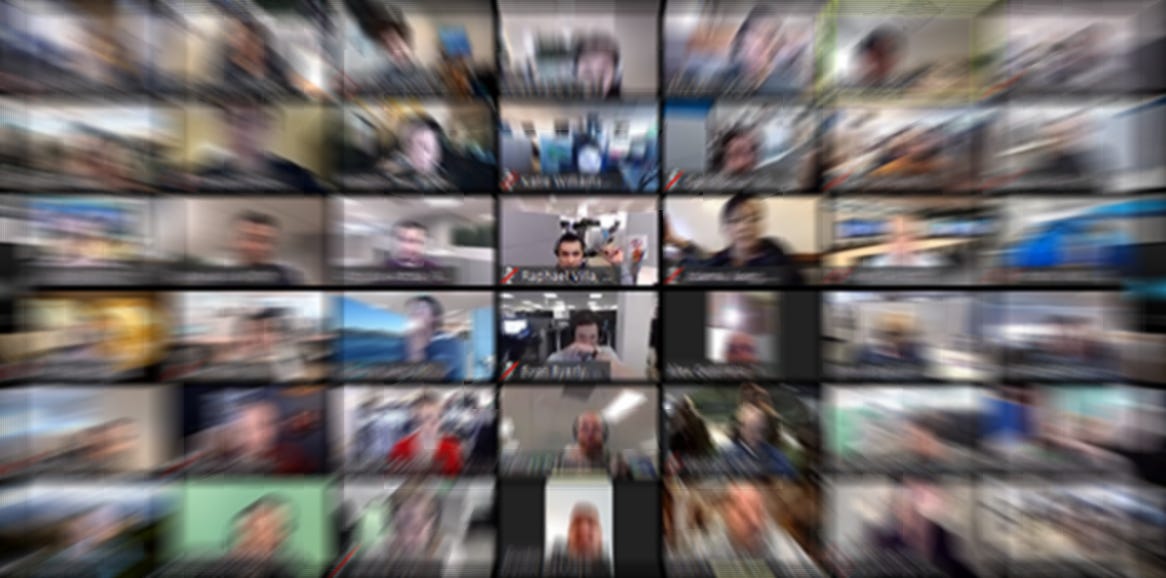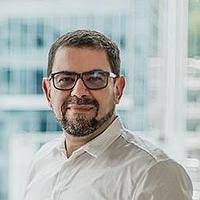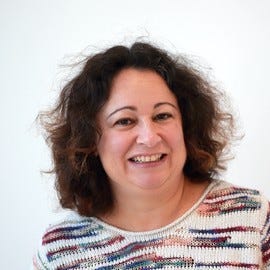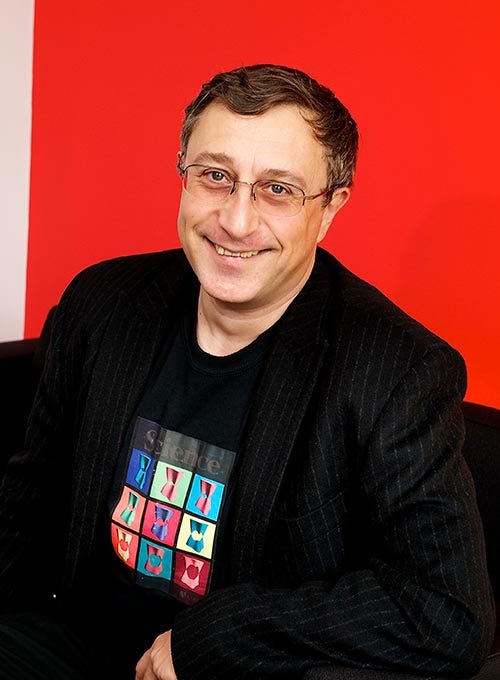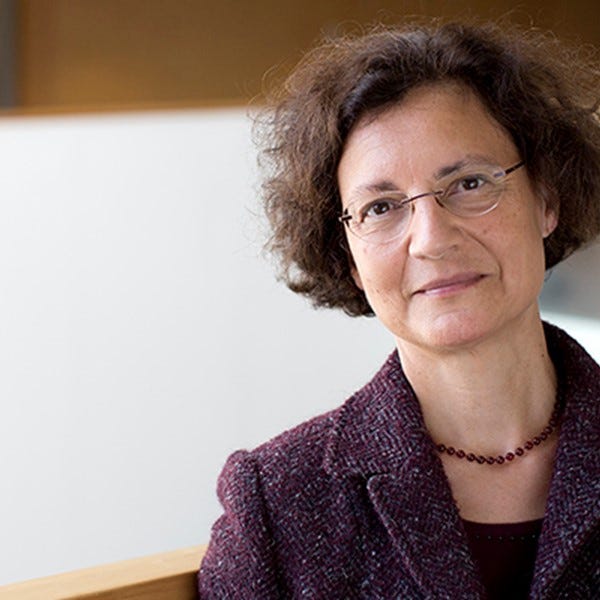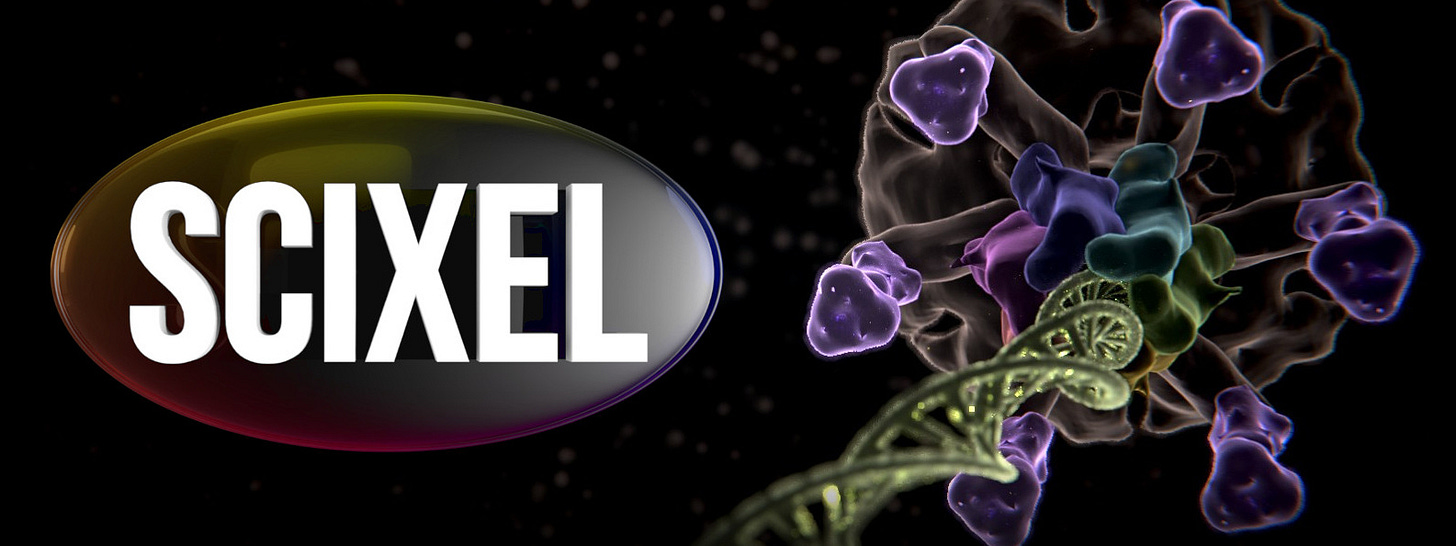Graphene and 2DM Online conference (GO2021) – (Part II)
The GO2021 Online Conference taked place during the 20-21 April.
I would like to present in this post a summary of the second and last day.
I hope that will be of interest. Currently, the situation in the world does not allow us to travel to organize events and we have to carry out these events online that so far are being kindly accepted by the scientific community.
Graphene and 2D Materials have a huge potential to impact established industrial sectors, building new emerging industries and niche segments and creating economic value.
The two-day Graphene and 2DM Online conference (GO2021) presented the most recent advances in fundamental research in electronics, energy storage, biohealth, composites, coatings or sensors.
25 high profile talks from worldwide most influential academia experts in the Graphene and 2DM sector presented speeches in this international event on how advanced materials will change the future of technology and impact positively our daily life
The speakers of the second day with their titles were:
He Tian (Tsinghua University, China) - Novel graphene, BP and perovskite-based 2D devices
Peng Zhou (Fudan University, China) - Find a Way for 2D materials in Electronics
Antonio H. Castro Neto (National University of Singapore, Singapore) - 2D-Electrolytes
Claudia Backes (University of Heidelberg, Germany) - Liquid phase exfoliation, degradation and functionalisation of layered materials
Jonathan Coleman (Trinity College Dublin, Ireland) - Electrical and electrochemical applications of liquid exfoliated nanosheets
Sebastian Grieger (University of Heidelberg, Germany) - Site selective oxidation of monolayered liquid-exfoliated WS2 by shielding the basal plane through adsorption of a facial amphiphile
Tim Nowack (University of Heidelberg, Germany) - Controlling the photoluminescence of liquid phase exfoliated γ-InSe nanosheet thin films by centrifugation-based size selection
Li Tao (Southeast University, China) - 2D Bismuth for Flexible Thermoelectric and Photoelectric Electronics
Catherine Journet-Gautier (Université Claude Bernard Lyon 1, France) - Polymer Derived Ceramics route and derivatives applied to the synthesis of boron nitride
Vladimir Falko (National Graphene Institute, University of Manchester, UK) - Moiré superlattice networks in twistronics bilayers of transition metal dichalcogenides
Vincent Meunier (Rensselaer Polytechnic Institute, USA) - Lattice dynamics in low-angle twisted bilayer graphene
Fokko de Vries (ETH Zurich, Switzerland) - Gate-Defined Josephson Junctions in Magic-Angle Twisted Bilayer Graphene
Viet-Hung Nguyen (Université Catholique de Louvain, Belgium) - Electronic localization in small-angle twisted bilayer graphene
Sergey Slizovskiy (National Graphene Institute, University of Manchester, UK) - Dielectric susceptibility of graphene due to its out-of-plane polarizability
James Hone (Columbia University in the City of New York, USA) - Bilayer Graphene as a Model Hydrodynamic Semicondutor
Alexander Balandin (University of California, Riverside, USA) - Two-Dimensional Charge-Density-Wave Quantum Materials
Luis Canonico (ICN2, Spain) - Disentangling Orbital and Valley Hall Effects in Bilayers of Transition Metal Dichalcogenides
Hadar Steinberg (Hebrew University of Jerusalem, Israel) - Spectroscopy of Two-Dimensional Superconductors with van der Waals Tunnel Junctions
Rebekka Garreis (ETH Zürich, Switzerland) - Shell filling and trigonal warping in graphene quantum dots
Aleandro Antidormi (ICN2, Spain) - Optimizing Graphene Photothermoelectric Detectors
Annick Loiseau (ONERA, France) - BN materials for 2D devices: learnings from optical properties
I would like to highlight some of the talks on this second day.
Bio: Professor A. H. Castro Neto got his Ph.D. in Physics at University of Illinois at Urbana Champaign in 1994. In 1994, he moved to the Institute for Theoretical Physics at the University of California at Santa Barbara as a postdoctoral fellow. In 1995, he became an Assistant Professor at University of California at Riverside. In 2000, he moved to Boston University as Professor of Physics. At Boston, Prof. Castro Neto became one of the leading theorists in the study of graphene. In 2010, Prof. Castro Neto became the Director of the Graphene Research Center and Distinguished Professor at the National University of Singapore . In 2003, Prof. Castro Neto was elected a fellow of the American Physical Society. He is the colloquia Editor for Reviews of Modern Physics, and co-editor for Europhysics Letters. Prof. Castro Neto was awarded the 11th Ross J. Martin Award by the University of Illinois at Urbana-Champaign, the University of California Regent Fellowship, the Alfred P. Sloan Research Fellowship, the visiting Miller Professorship by the University of California, Berkeley, the visiting Gordon Godfrey Professorship by the University of New South Wales, Australia, and the Distinguished Visiting Chair Professor at the SKKU Advanced Institute of Nano-Technology (SAINT), South Korea. Prof. Castro Neto has authored more than 200 manuscripts and has published in prestigious journals including Science, Nature Materials, Nature Physics, and Physical Review Letters, and has over 12,000 citations. Prof. Castro Neto has given more than 200 seminars worldwide.
Abstract: Prof. Castro Neto discussed a new class of materials called 2D-electrolytes that share properties of 2D-materials and electrolytes and undergo morphological transitions triggered by environmental changes
Bio: Claudia Backes has received her Ph.D with honors in 2011 from the University of Erlangen, Germany. After some time as deputy executive director in the Erlangen Cluster of Excellence “Engineering of Advanced Materials” Claudia received a fellowship grant from the German Research Foundation (DFG) in 2012 and moved to Jonathan Coleman’s groups at Trinity College Dublin, Ireland. In 2015, she returned to Germany and started her independent research at the Chair of Applied Physical Chemistry at the Heidelberg University funded through the prestigious Emmy Noether funding from the German Research Foundation from 2016. Currently, her team comprises five PhD students, one postdoc and several undergraduate students. Claudia’s research interests are in liquid exfoliation, nanosheet size control and size-dependent properties, chemical modification and production of composites and hybrid structures.
Abstract: Liquid exfoliation has become an important production technique to give access to large quantities of two-dimensional nanosheets in colloidal dispersion. Importantly, this is a highly versatile technique that can be applied to numerous layered materials beyond graphene. In this talk, our recent advances in the liquid exfoliation, optical characterisation and degradation of a range of 2D-materials will be summarised. Materials under study include group VI TMDs, PdSe2, PtSe2, MPS3 (M: Ni, Mn, Fe), InSe, RuCl3, CrTe3 and porous organic sheet stacks (2D polymers). All materials can be exfoliated and size-selected in a similar way yielding nanosheet dispersions with well-defined changes in their lateral dimensions and thickness. Inherently, lateral nanosheet size and layer number are linked, in agreement with a recently developed model of energy equipartition of tearing and delamination events.
The availability of a broad range of size-selected nanosheets allows us to study degradation in various environments through optical spectroscopy systematically. For materials beyond graphene, BN and transition metal dichalcogenides (TMDs), we find evidence for degradation in optical absorbance and extinction spectroscopy that allow us to track degradation kinetics. In the case of group VI-TMDs, we use photoluminescence measurements as function of time and temperature in dispersion to selectively track monolayers. Depending on the surfactant used as stabilizers, monolayers of WS2 react in ambient conditions in a photo-induced, as well as thermal degradation pathway with activation energies of ~25-30 kJ/mol and ~50 kJ/mol, respectively. This confirms the recently observed difference in nanosheet reactivity depending on the surfactant coverage. Finally, we present our attempts to passivate reactive defects through functionalisation.
Bio: Prof. Catherine Journet is Full Professor at the Laboratory of Multimaterials and Interfaces from the University of Lyon (F). She is leading a research group on low-dimensionality materials whose main activities are related to the synthesis of micro- and nanostructures, the study of the interface’s structuration during synthesis, and the physico-chemical properties of the fabricated materials. She is among the pioneering scientists in the nanotube field and an expert in the synthesis techniques of carbon (C) and boron nitride (BN) 1D and 2D nanostructures. She received her PhD in 1998 from the University of Montpellier about the “Production of Carbon Nanotubes”. After a post-doctoral position at the Max Planck Institute for Solid State Research in Stuttgart (DE) in the group of K. von Klitzing, she joined the University of Lyon as an Assistant Professor in 1999. Her research mainly focuses on the synthesis and characterization of 2D and 1D BN- and C-based nanomaterials. Currently, she is involved in the synthesis of BN-based 2D materials and heterostructures. She is author of about ~ 80 scientific peer-reviewed papers for a total of more than 8000 citations.
Abstract: Due to its intrinsic properties, hexagonal boron nitride (h-BN) is currently an increasingly attractive material, especially for applications related to two-dimensional materials. However, its properties are highly dependent on the synthesis approach used. The polymer-derived ceramics (PDCs) route allows to elaborate h-BN with adapted textural and structural properties. Here we will demonstrate the value of the PDCs route for the synthesis of h-BN. First, we will see how the PDCs route alone from borazine precursor allows, at relatively low temperature and atmospheric pressure, the growth of h-BN single crystals with sizes of a few microns. Crystallization is improved by adding 5 wt% Li3N to the preceramic polymer. Next, we will show that by coupling the PDCs route with gas pressure sintering (GPS), using the same preceramic polymer and 25 wt% Li3N, the crystal size is increased to hundreds of microns. The resulting pure h-BN single crystals can then be exfoliated into h-BN nanosheets. Finally, the combination of the PDCs route with atomic layer deposition (ALD) has enabled the successful synthesis of functional BN nano-/heterostructures from highly structured sensitive templates, making this ALD process a promising alternative for the fabrication of functional BN nanostructures..
Bio: Vladimir Fal’ko (ORCID 0000-0003-0828-0310) is condensed matter theorist responsible for many advances in understanding of electronic and optical properties of two-dimensional materials and their heterostructures (graphene, silicene, transition metal dichalcogenides, metal chalcogenides) and for various aspects of theory of quantum transport and fundamentals of nanoelectronics. His career was marked by Humboldt Fellowship, EPSRC Advanced Fellowship, European Research Council Advanced Investigator Grant and Synergy Grant, and Royal Society Wolfson Foundation Research Merit Award. Falko was the initiator of ‘Graphene Week’ conference series and a Chair-organiser more than 30 other international meetings; he is founding Editor-in-Chief of the IoP Journal ‘2D Materials’ (maintaining IF~7), and he serves as the Leader of Workpackage ‘Enabling Science’ in the European Graphene Flagship Project.
Abstract: We apply a multiscale modelling approach to study moiré superlattice in twisted homo- and heterobilayers of transition metal dichalcogenides (TMD), taking into account the interlayer hybridisation of the electronic orbital and lattice reconstruction due to stacking-dependent adhesion. First of all, we develop DFT-parametrized interpolation formulae for interlayer adhesion energies of MoSe2, WSe2, MoS2, and WS2 with both parallel and antiparallel orientation of their unit cells and arbitrary offset of the honeycomb lattices in the adjacent layers. Then, we combine those interpolation formulae with elasticity theory and analyze the bilayer lattice relaxation into mesoscale domain structures. We find that 3R and 2H stacking domains develop for, respectively, bilayers with parallel (P) and antiparallel (AP) orientation of the monolayer unit cells, separated by a network of dislocations, for twist angles θ <θP∼2.5 and θ <θAP∼1. Such lattice reconstruction has been verified by STEM imaging. We also show that the triangular domain structures of P-oriented homobilayers would manifest itself in local tunnelling characteristics of marginally twisted bilayers: these domains feature the layer asymmetry of band-edge wave functions and also the ferroeletric interlayer polarisation. For AP bilayer, we show that the deformation of the lattices around domain walls (which resemble twist dislocations oriented along the planes of in bulk 2H crystals) generate piezo-electric charges, reaching local density up to ±0.5x1012e/cm2 at the junctions of the honeycomb domain wall network, whereas the 3R stacking domains in P-bilayers feature weak ferroelectric (interlayer) charge transfer. Finally, we use DFT modelling of bandstructure of bilayers with various stacking configurations and interlayer distances to develop and parametrise k·p theory Hamiltonians in the relevant parts of the Brillouin zone, and, then, establish the electronic structure of the bilayer across the moire supercell, taking into account the ferroelectric and piezolectric charge transfers.
Bio: James Hone is currently Wang Fong-Jen Professor of Mechanical Engineering at Columbia University, and director of PAQM, Columbia’s Materials Science Research and Engineering Center (MRSEC). He received his BS in physics from Yale in 1990, and PhD in experimental condensed matter physics from UC Berkeley in 1998, and did postdoctoral work at the University of Pennsylvania and Caltech, where he was a Millikan Fellow. He joined the Columbia faculty in 2003.
Abstract: Hydrodynamic electronic transport occurs when carrier-carrier collisions constitute the dominant scattering mechanism. This regime has attracted intense recent interest with its discovery in two dimensional materials, for which interactions are intrinsically strong and disorder plays a minimal role. Here we show that bilayer graphene is a model hydrodynamic semiconductor, in which carrier-carrier collisions play a dominant role over a wide range of temperature and carrier density. Remarkably, a simple model captures the complex interplay between carrier-carrier scattering and conventional dissipative scattering. This model, depicted in Figure 1 below, consists of a universal Coulomb drag contribution that dominates at charge neutrality and decays with increasing density, and a nonuniversal dissipative contribution corresponding to collective motion of the electron-hole plasma. We compare this model to electrical transport measurements of ultraclean bilayer graphene encapsulated within hBN, with dual gates providing independent control over carrier density and bandgap. At charge neutrality, these samples show electron-hole limited conductivity over a wide temperature range. A single set of fit parameters provides quantitative agreement with experiments at all densities, temperatures, and gaps measured, allowing for separate extraction of the electron-hole and dissipative contributions. Our work provides an intuitive understanding for electron-hole limited transport in a semiconductor across a wide range of parameters and provides a unique link between semiconductor physics and the emerging field of viscous electronics.
Bio: I am a Physicist with a large expertise in Condensed Matter Physics, Nanoscience, and in Transmission Electron Microscopy (TEM) and spectroscopies techniques. From 1994 my researches turn to Nanoscience, conducting research on the synthesis, structural, electronic and optical properties of 1D and 2D objects issued from van der Waals materials such as graphene, boron nitride., black phosphorus. I am leading at the Laboratoire d’Etude des Microstructures (LEM), a joint Research unit CNRS-ONERA the research domain on low dimension materials. I am Director at CNRS of the International Research Network on Science of Graphene and Nanotubes (‘Graphene and co’) and from 2013 Partner and Member of the Executive Board of the Flagship graphene launched by the EC.
Abstract: With the rise of 2D materials, BN layers and crystals have become a strategic material for the fabrication of van der Waals heterostructures. Stacked with any other 2D material either as a substrate or as capping layer or as dielectric layer, it can reveal the best of their physical properties. Up to now, the prototype devices are mostly assembled via mechanical exfoliation and transfer of atomic layers. But active researches are developing worldwide to fabricate the large-surface crystals required for device industrialisation. In this context, optical diagnostics are highly desired to qualify hBN materials for their integration into 2D devices. In this talk, the recently acquired basic knowledge on the luminescence properties of free excitons in hBN measured by cathodoluminescence and the vibrational properties by Raman spectroscopy are exploited for this purpose. The reference data are taken from the high quality crystals grown at high pressure and high temperature (HPHT) mostly used in devices. They are compared with those of hBN materials obtained either using a chemical process followed by high pressure annealing or a direct synthesis at atmospheric pressure (APHT) with boron isotope control. The APHT crystals have been shown recently to be a credible alternative to HPHT ones for high-performance graphene devices.
Don't hesitate to subscribe if you haven't already done so.
Regards and take care.
Born in 2012, Scixel is a project devoted to the improvement of the scientific comunication through the creation of graphical products: pictures, animations, graphs, posters, etc. Scixel consists of scientists with a deep knowledge in digital graphics but also with a long experience in giving talks, preparing posters and papers and other daily situations of scientific work.
We have focused our work into universities and research institutes all over the world: TuDelft (The Netherlands), NIMS (Japan), Basel University (Switzerland), Universidad Autónoma de Madrid, CNB or ICFO (Spain), to name a few.
Web: https://scixel.es/
If you are a company or an individual who would like to place your advertising in my newsletter you can contact me (email) and let me know your request of type of ad and number of newsletters you would like to place it. I will send you a budget as soon as possible.




